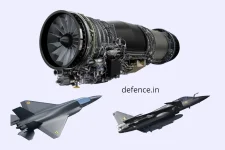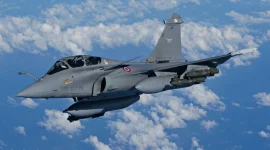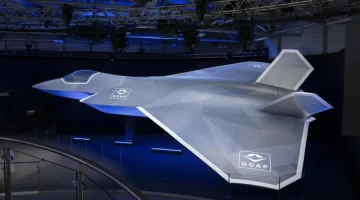- Views: 990
- Replies: 6
Domestically manufactured unmanned aerial systems (UAS) have reportedly demonstrated superior capabilities compared to imported and jointly developed drones during a recent conflict with Pakistan, according to sources familiar with the matter.
The Indian-developed Johnnette Technologies’ JM-1, Solar Industries’ Nagastra-1, and Tata Advanced Systems’ ALS-250 are said to have showcased advanced performance and reliability in combat situations.
Information suggests that while foreign-sourced drones and those created through international technical partnerships have played a role in India's defence preparedness, the indigenous systems proved more effective in several crucial aspects.
Imported drones, despite often featuring advanced technology, reportedly encountered difficulties with maintenance, adapting to local environmental conditions, and higher running costs.
Similarly, drones developed via collaborative efforts, while benefiting from international expertise, sometimes did not fully meet the specific operational requirements unique to India.
In contrast, the JM-1, Nagastra-1, and ALS-250 drones were specifically designed considering India’s diverse terrain, climate, and tactical defence needs. These Indian systems reportedly exhibited greater durability, cost-efficiency, and ease of upkeep, making them more suitable for prolonged missions in conflict areas.
Publicly available information on the Nagastra-1, for example, indicates it is a 'suicide drone' or loitering munition capable of carrying a 1kg warhead up to 15 km, with an upgraded version offering a 30 km range, highlighting the kind of precision strike capability mentioned.
The ALS-250 is known as a Vertical Take-Off and Landing (VTOL) system, offering operational flexibility in varied terrains.
The successful deployment of these indigenous drones signifies a major step forward in India’s objective of achieving self-reliance in defence manufacturing. The performance of the JM-1, Nagastra-1, and ALS-250 highlights the increasing ability of Indian defence firms to produce world-class technology.
This achievement is in line with the government's 'Aatmanirbhar Bharat' (Self-Reliant India) initiative, which promotes the creation and use of homegrown technologies to lessen reliance on foreign defence systems.
Sources also indicated that the notable success of these drones has led the Indian armed forces to consider increasing their orders and operational deployment. Data collected from their performance in the recent conflict is expected to guide future enhancements, ensuring these systems continue to be a key component of India’s defence strategy.
Further details on their specific roles include:
- Johnnette Technologies JM-1:This tactical UAV, designed for surveillance and reconnaissance, is reported to have excelled in providing real-time intelligence. Its compact nature, long flight duration, and sophisticated sensors allowed it to operate effectively in contested zones, delivering vital information with minimal risk to personnel. The JM-1 is generally known for its man-portable design and versatility in intelligence, surveillance, and reconnaissance (ISR) missions.
- Solar Industries Nagastra-1:Identified as a loitering munition or “kamikaze drone,” the Nagastra-1 reportedly demonstrated high precision and effectiveness in its strike capabilities. It is designed to neutralize valuable targets and showed outstanding performance in accurately hitting enemy positions while minimizing unintended damage.
- Tata Advanced Systems ALS-250: This versatile drone from Tata Advanced Systems displayed strong performance in both surveillance and combat functions. Its modular construction and capacity for integrating various advanced payloads enabled it to adapt to different mission requirements, exceeding performance expectations in rapidly changing battlefield conditions.



